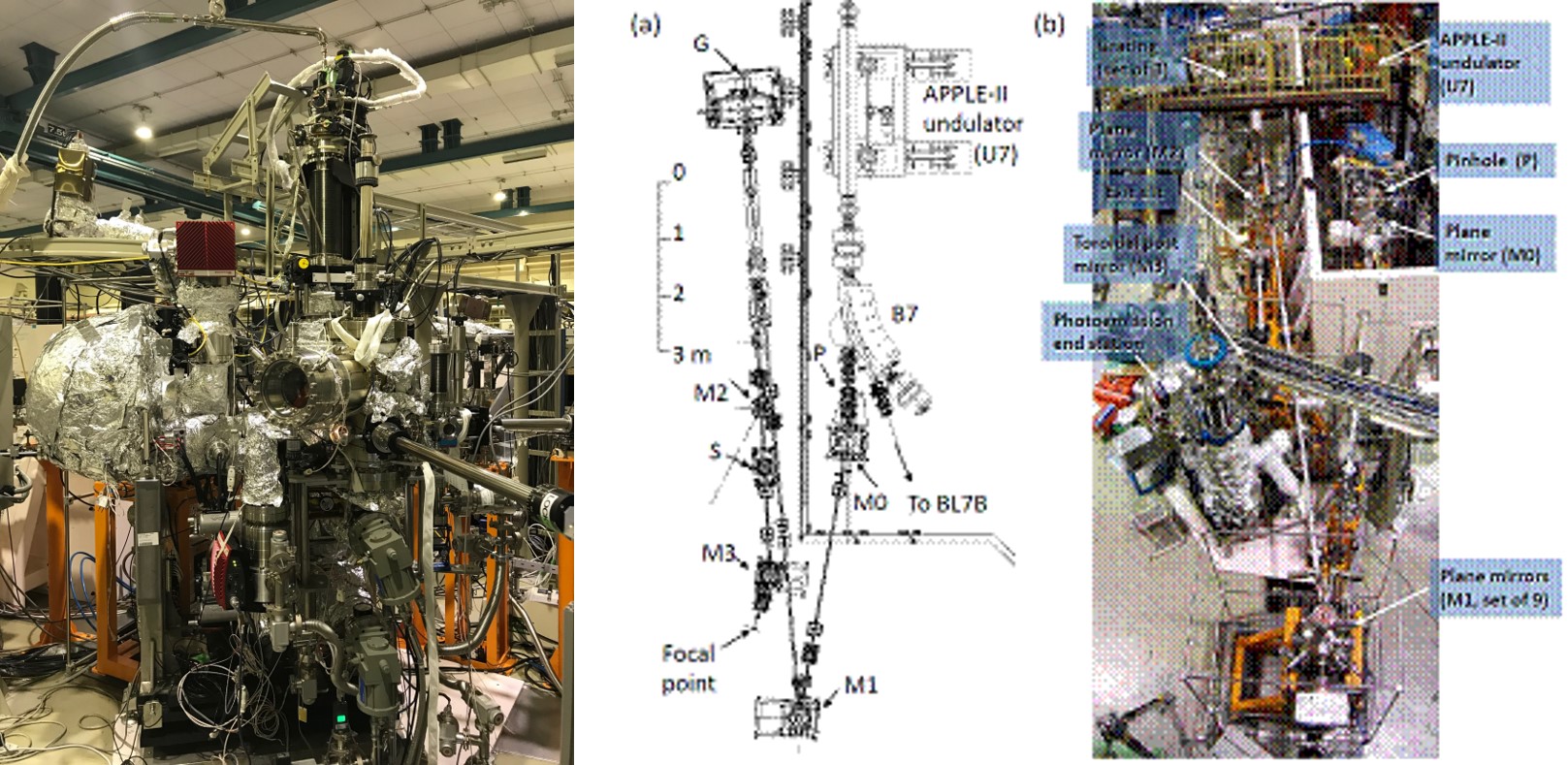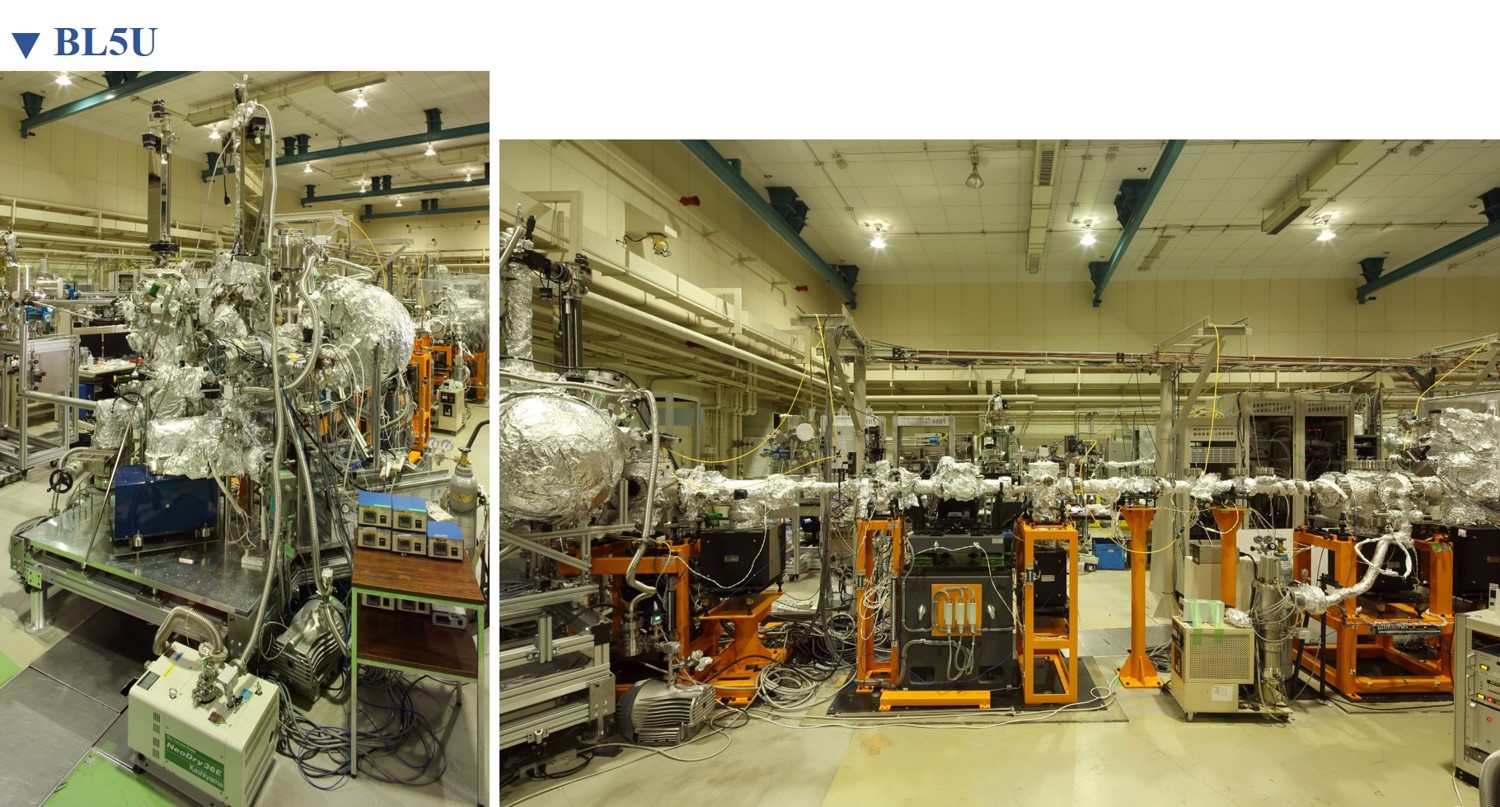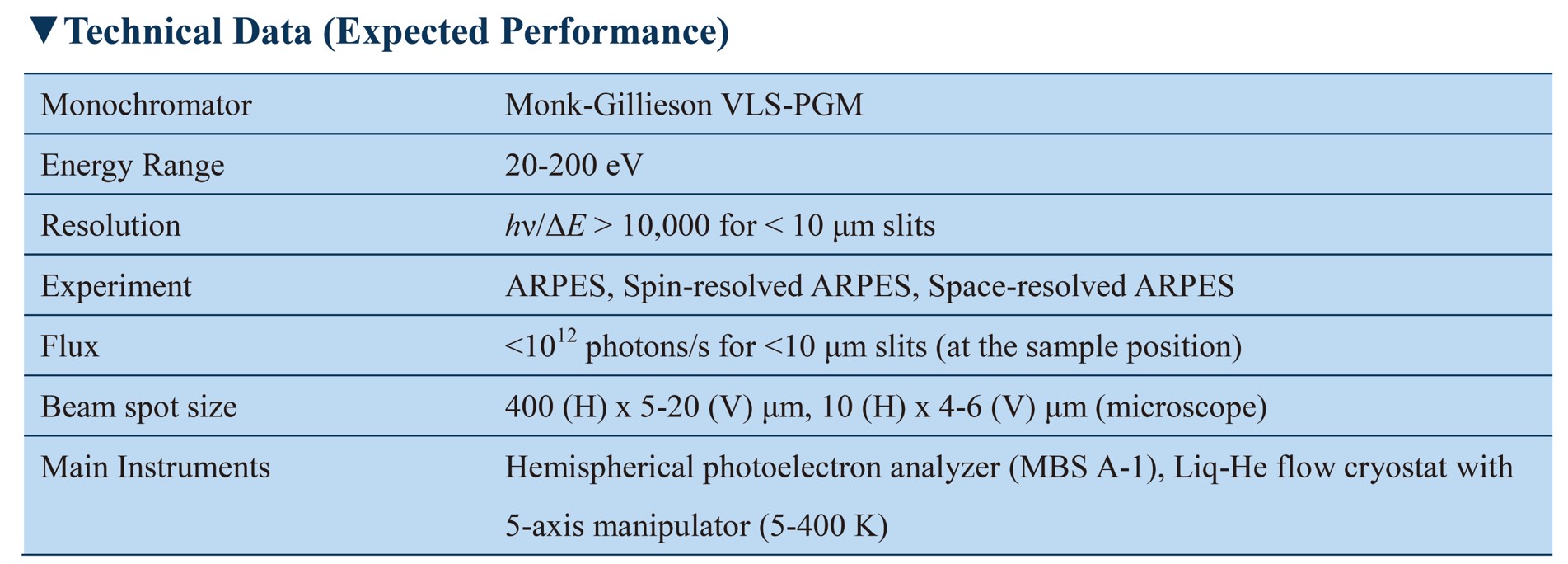

| 
| 
| 
| 
| 
| 
|
Strongly Electron Correlated Materials
Strongly correlated electron materials have attracted more attentions in the last few decades because of their unusual and fascinating properties such as high-Tc superconductivity, giant
magnetoresistance, heavy fermion and so on. Those unique properties can offer a route toward the next-generation devices. In TANAKA group, we investigate the mechanism of the physical properties
as well as the electronic structure of those materials by using angle-resolved photoemission spectroscopy (ARPES), a powerful tool in studying the electronic structure of complex materials, based
on synchrotron radiation.
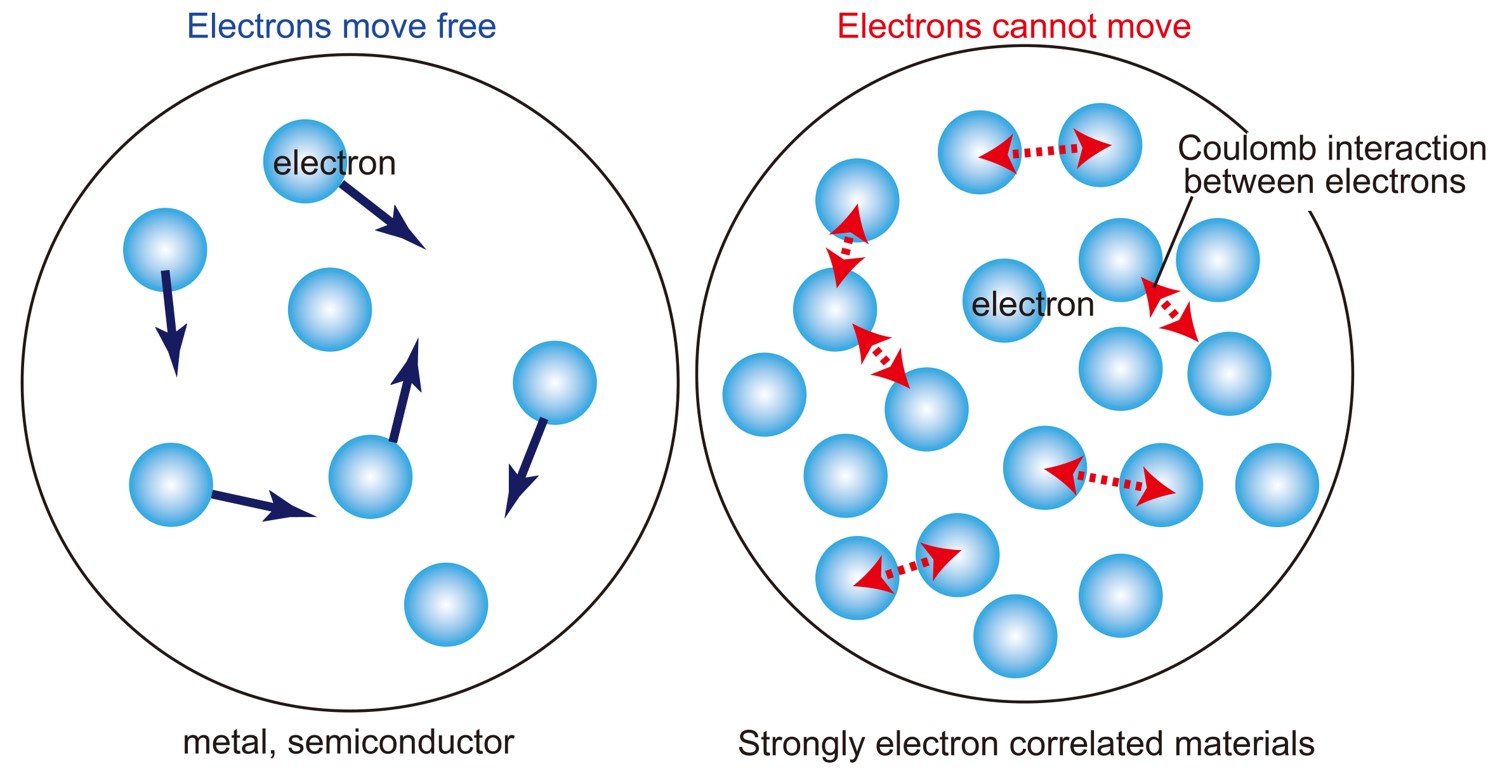
・High-Tc cuprate superconductor
"Superconductivity" is a phenomenon of exactly zero electrical resistance at low temperature near absolute zero (-273℃).
The phenomenon of superconductivity was discovered by Dutch physicst, Kamerlingh Onnes in 1911, in metallic mercury (Hg) below 4K,
and the superconductivity has been found in many metallic materials at low temperature.
The machanism of conventional superconductivity was proved by a theory formulated by John Bardeen, Leon Cooper, and Robert Schrieffer (BCS theory).
BCS theory explains the superconductivity in which a current of electron pairs flows without resistance in materials at low temperature.
Based on the theory, the superconductivity can happen when a single negatively charged electron slightly distorts the lattice of atoms (phonon)
in the superconductor, drawing toward it a small excess of positive charge. This deformation of the lattice causes another electron,
with opposite spin, to move into the region of higher positive charge density. The two electrons then become correlated and are binded as a Cooper pair (see figure below).
The first high-Tc superconductor was discovered in 1986 by IBM researchers, Georg Bednorz and K. Alex Muller, who were awarded the 1987
Nobel Prize in Physics for their important break-through in the discovery of superconductivity in ceramic materials. However, the mechanism of high-Tc
superconductivity has been still under debate over 30 years. To increase temperature that shows the superconductivity, we need to investigate the electronic
structure in the normal and superconducting states. Angle-resolved photoemission spectroscopy (ARPES) is one of the most powerful experimental techniques to
survey the electronic structure of condensed matters.
・Iron-based high-Tc superconductor
In 2008, iron-based superconductors (Fe-SCs) were discovered from Japan which are iron-containing chemical compounds. This new type of superconductors
is based on conducting layers of iron and a pnictide (typically arsenic (As) and phosphorus (P)). Much of the interest is because the new
compounds are very different from the cuprates and may help lead to a theory of non-BCS-theory superconductivity.
Fe-SCs crystallize into the [FeAs] layered structure alternating with spacer or charge reservoir block. The compounds can be classified into "1111", "122", "111", and "11" types.
Electron, hole doping or applied pressure will transform the compounds into superconductors.
The phase diagram is similar to the cuprates. However, Fe-SCs has been known that the superconductivity is strong for impurity effects in contrast with high-Tc cuprates.
This phenomenon has attracted attenstions for industrial applications. However, since the superconducting mechanism of Fe-SCs has been still unlear yet, extensive researches are
ongoing all over the world.
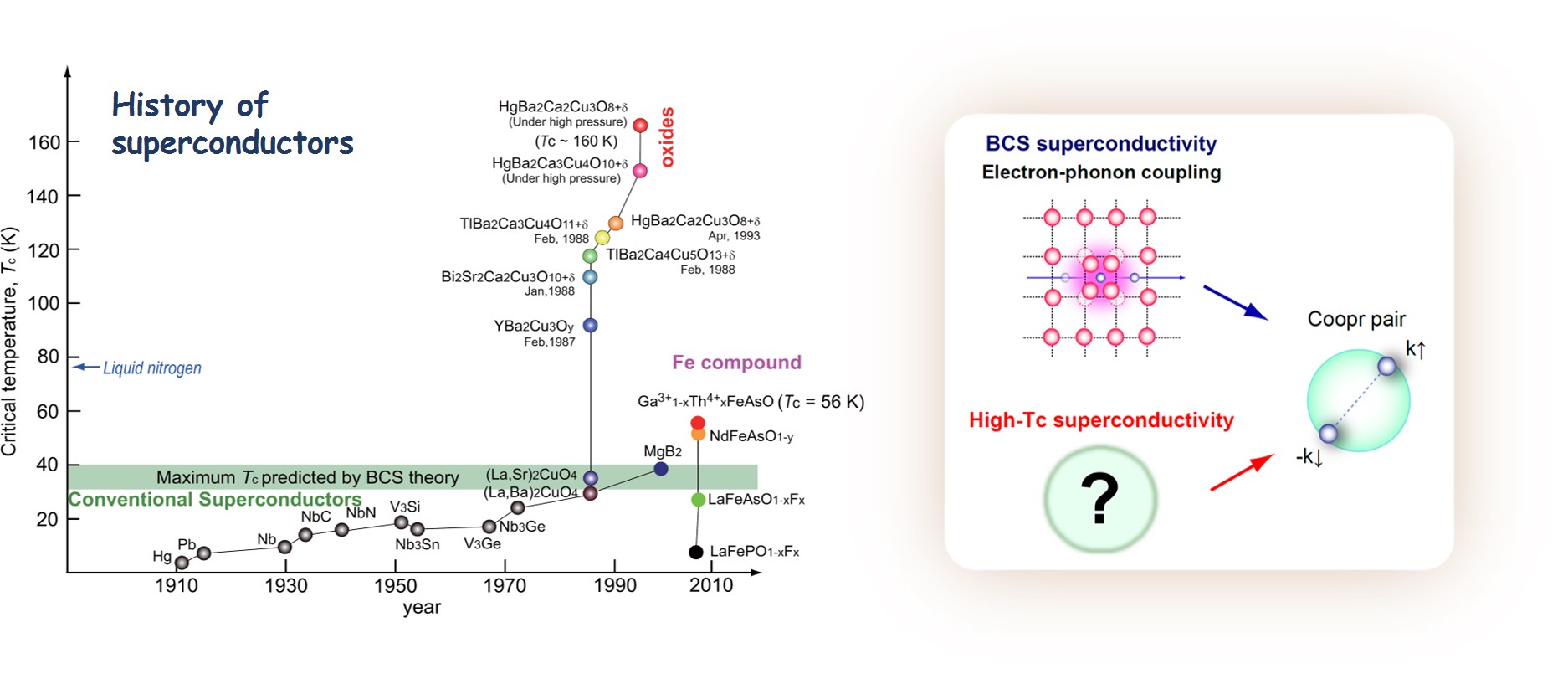
Angle-Resolved PhotoEmission Sectroscopy (ARPES)
Angle resolved photoemission spectroscopy (ARPES) provides the most direct information on the electronic structures of materials such as band dispersions, Fermi surfaces, and superconducting gaps.
ARPES gives us the information on the direction, speed, and scattering process of electrons in materials obtained by ARPES spectra.
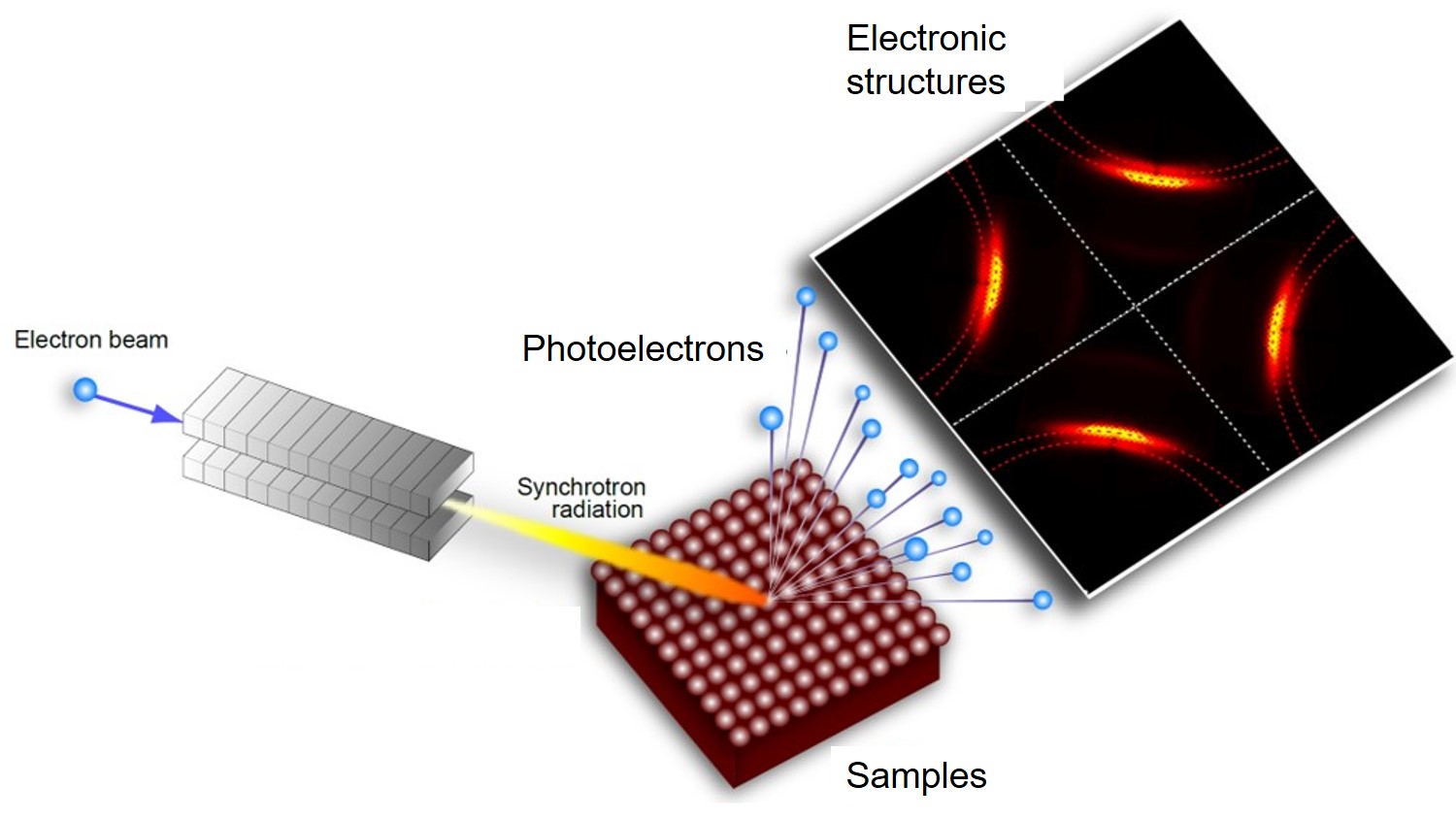
Spin-Resolved PhotoEmission Spectroscopy (SRPES)
BL5U will have new capability to obtain spin- and spatial-dependence of the electronic structure of solids using new spin detector and micro-focused beam from 2019.
Beamlines and Endstations -Beamline 7U & 5U at UVSOR-
Beamline 7U, named the Symmetry- And Momentum-Resolved electronic structure Analysis Instrument (SAMRAI) for functional materials, was constructed to provide a photon flux with high energy resolution and high flux mainly for high-resolution angle-resolved photoemission spectroscopy, so-called "ARPES", of solids [1]. An APPLE-II-type variable-polarization undulator is installed as the light source. The undulator can produce intense VUV light with horizontal/vertical linear and right/left circular polarization. The undulator light is monochromatized by a modified Wadsworth type monochromator with three gratings (10 m radius; 1200, 2400, and 3600 lines/mm optimized at hn = 10, 20, and 33 eV). The energy resolution of the light (hnu/Dhnu) is more than 104 with a photon flux of 1011-1012 ph/s or higher on samples in the entire energy region. The beamline has a photoemission end-station equipped with a 200 mm-radius hemispherical photoelectron analyzer (MB Scientific AB, A-l analyzer) with a wide-angle electron lens and a liquid-helium-cooled cryostat with 6-axis pulse motor control (AVC Co., Ltd., i-GONIO). The main function of the beamline is to determine the electronic structure of solids and its temperature dependence in order to reveal the origin of their physical properties.(CONTACT)。
